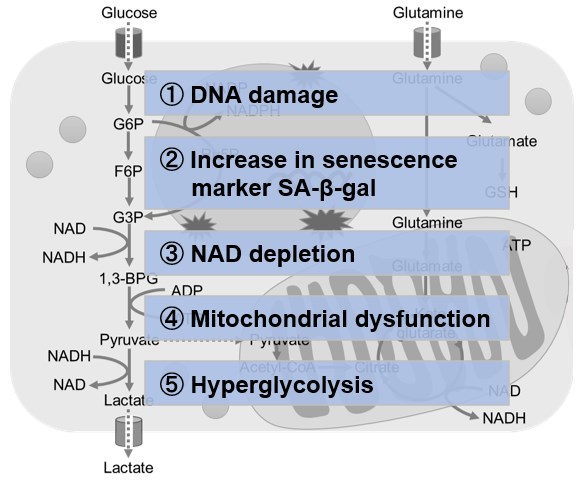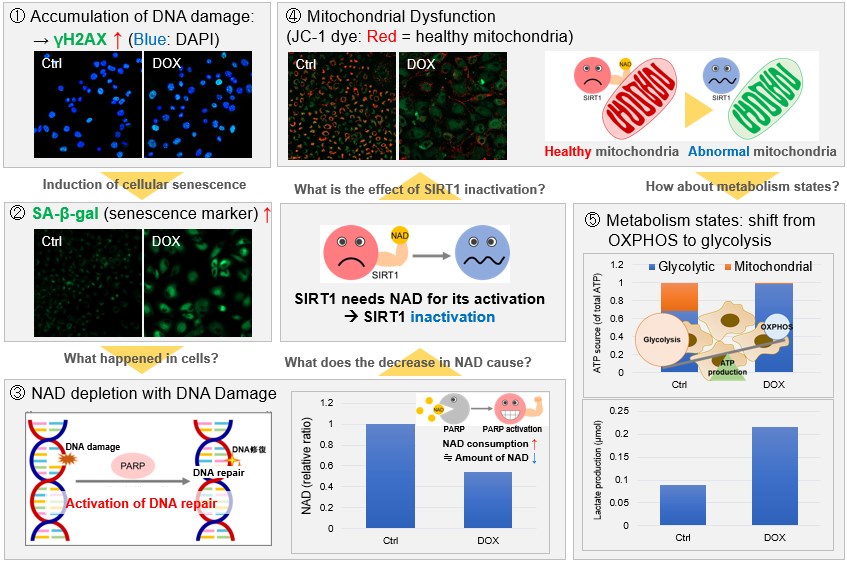|
Cellular senescence is a complex biological process that is influenced by several key factors: DNA damage, telomere shortening, oxidative stress, oncogene activation, and so on. These factors collectively contribute to the complex process of cellular senescence, which acts as a double-edged sword - protective in preventing cancer growth, but also contributing to aging and age-related diseases. |
|||
|
Apoptotic stress causes mtDNA release during senescence and drives the SASP |
Iron accumulation drives fibrosis, senescence and the senescence-associated secretory phenotype Click here for the original article: Mate Maus, et. al., Nature, 2023. |
Genome-wide CRISPR activation screening in senescent cells reveals SOX5 as a driver and therapeutic target of rejuvenation Click here for the original article: Yaobin Jing, et. al., Cell Stem Cell, 2023. |
|
|
Point of Interest |
Point of Interest - Vascular and hemolytic injury trigger iron accumulation, which causes senescence and promotes fibrosis. - Senescent cells persistently accumulate iron, even after the increase in extracellular iron has subsided. - Cells exposed to various types of senescence-inducing insults accumulate abundant ferritin-bound iron, mostly within lysosomes. - The high levels of labile iron fuel the generation of reactive oxygen species and the SASP. |
Point of Interest - CRISPRa screening identifies a comprehensive set of rejuvenators against senescence. - Activation of SOX5 initiates a rejuvenation program via epigenetic remodeling. - SOX5 activation leads to the stimulation of the HMGB2 enhancer, resulting in subsequent geroprotective effects. - Gene therapy using only SOX5 has the potential to promote the regeneration of aged knee joints. |
|
| Related Techniques | |||
| Cellular senescence detection | SPiDER-βGal for live-cell imaging or flow cytometry / microplate reader / tissue samples. | ||
| Ferrous ion (Fe2+) detection | FerroOrange and Mito-FerroGreen | ||
| Total ROS detection | Highly sensitive DCFH-DA or Photo-oxidation Resistant DCFH-DA | ||
| Lysosomal function | Lysosomal Acidic pH Detection Kit-Green/Red and Green/Deep Red | ||
| Mitochondrial superoxide detection | MitoBright ROS Deep Red - Mitochondrial Superoxide Detection | ||
| Mitochondrial membrane potential detection | JC-1 MitoMP Detection Kit / MT-1 MitoMP Detection Kit | ||
| Oxygen consumption rate assay | Extracellular OCR Plate Assay Kit | ||
| Antibody/Protein labeling: quick and high recovery | Fluorescein, Biotin, and Peroxidase Labeling Kit - NH2 | ||
| Related Applications | |||
Metabolic shift to glycolysis in senescenct cells |
|||
 |
NAD(+) levels decline during the aging process, causing defects in nuclear and mitochondrial functions and resulting in many age-associated pathologies*. Here, we try to redemonstrate this phenomenon in the doxorubicin (DOX)-induced cellular senescence model with a comprehensive analysis of our products. *S. Imai, et al., Trends Cell Biol, 2014, 24, 464-471
|
||
 |
|||















